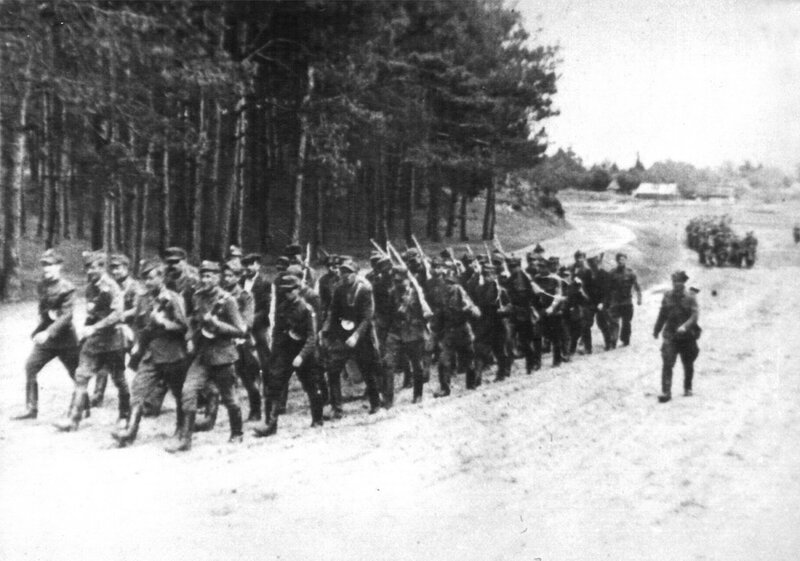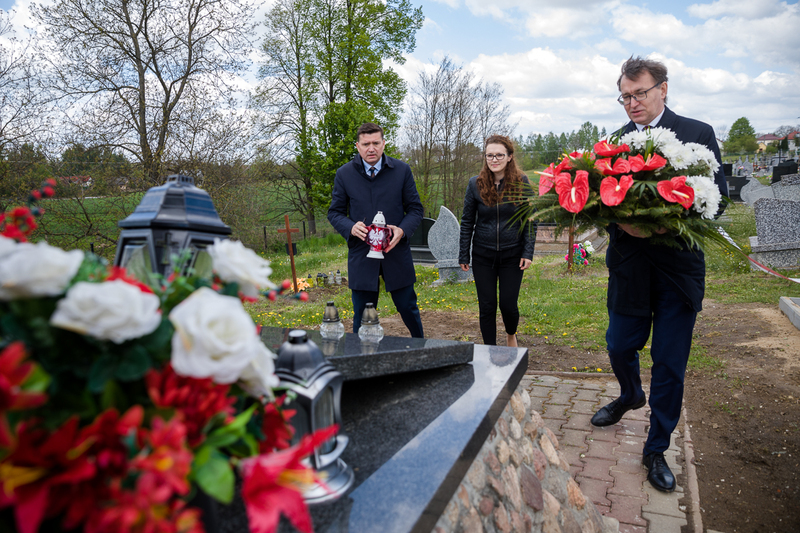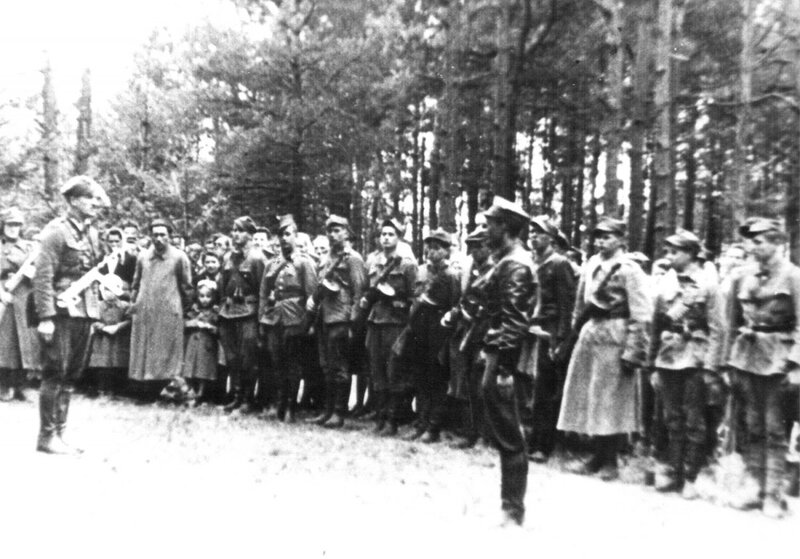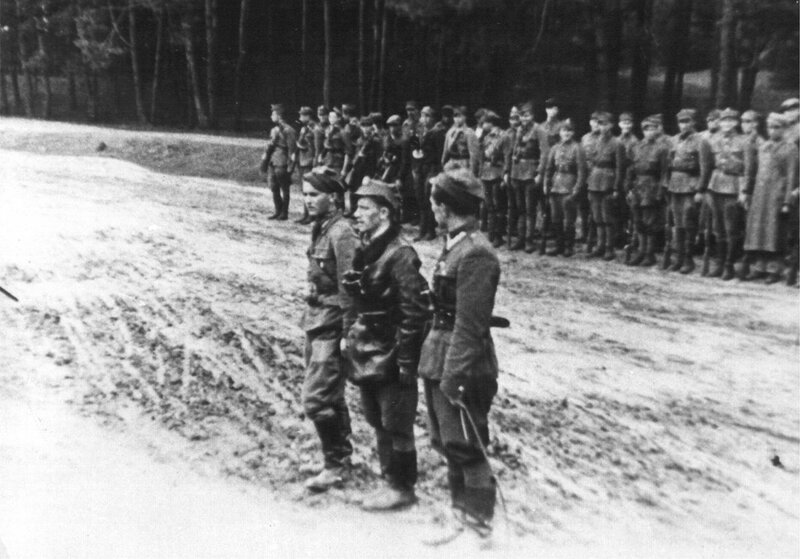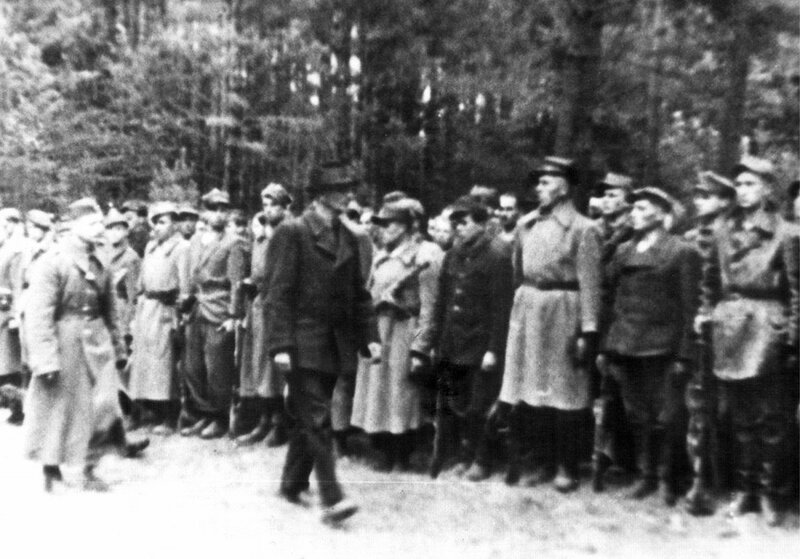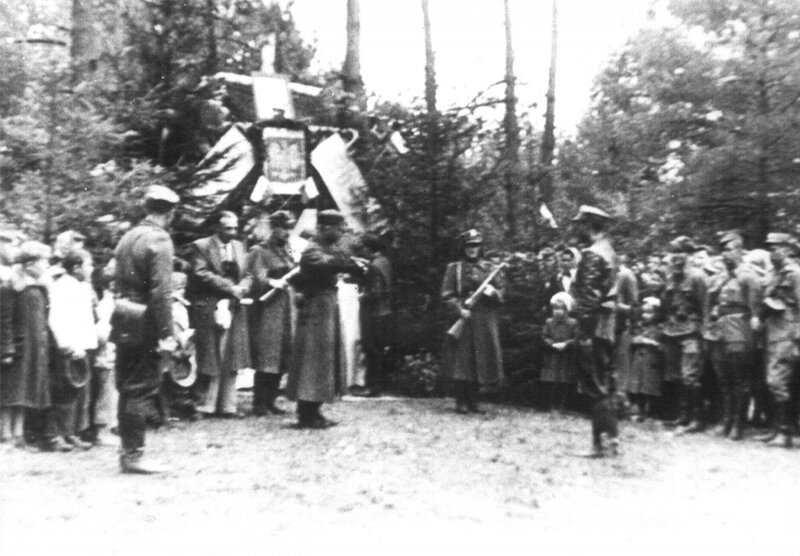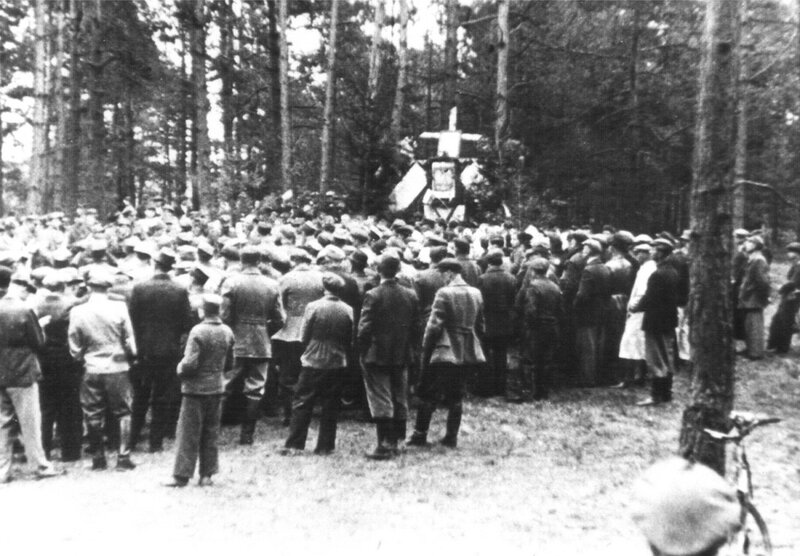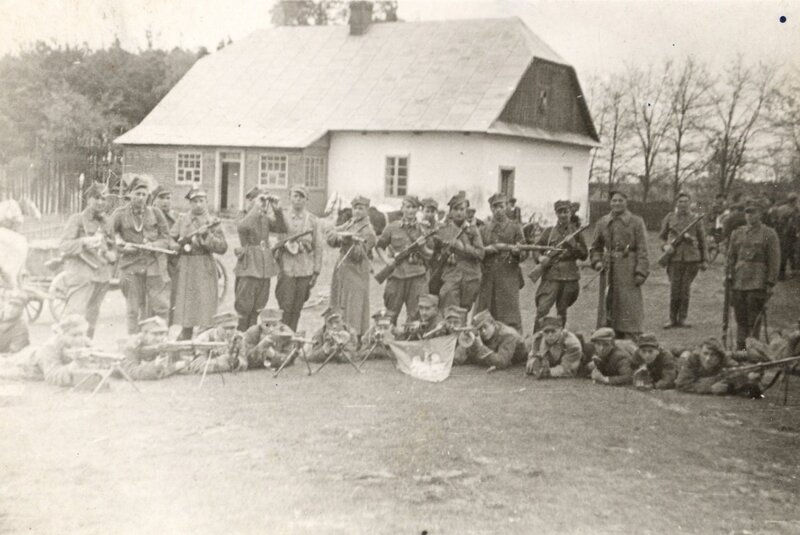Kuryłówka is located on the right bank of the San River, northeast of Leżajsk. Before the war, it was inhabited by just over 1,500 people. The period of German occupation took its tragic toll on the town, as pacifications and arrests cost the lives of several dozen of its inhabitants.
UNDER NEW OCCUPATION
At the end of July 1944, the Leżajsk region was occupied by the Red Army. The pace of the Soviet attack was rapid. Serious damage to the city and the surrounding area was avoided largely thanks to the soldiers of the Polish Underground, who helped the Soviet troops. In the following weeks, events typical of the Polish summer of 1944 also took place in Leżajsk). The front units of the Red Army were followed by the NKVD, which arrested Home Army soldiers and representatives of the Government Delegation for Poland. Soon, in addition to the NKVD and Polish communists, a new enemy emerged.
Since the autumn of 1944, the Ukrainian nationalist underground had been intensively working on forming its own armed units, which soon undertook terrorist actions against Poles inhabiting the right bank of the San River.
In view of the complicated situation, on 26 February 1945, the Commandant of the Rzeszów District of the National Military Organization, Kazimierz Mirecki issued an order formally resuming the activity of the organization. In mid-March, the district Command established the Forestry Unit Command, which was initially headed by Capt. Tadeusz Gryblewski “Ostoja”. It was composed of eight units, among which were those commanded by Bronisław Gliniak “Radwan”, Stanisław Pelczar “Majka”, Franciszek Szarek “Lis” and Józef Zadzierski “Wołyniak”.
In the spring of 1945, the forests were full of partisan units. The NKVD, for obvious reasons, did everything they could to hunt down members of the Polish pro-independence movement, but were operating on foreign, unknown territory.
The Security Service was the NKVD’s only reliable ally. Support of other Polish uniformed services was not as certain. The presence of Soviet officers and the aggressive propaganda against the legal authorities of the Republic of Poland were rarely accepted both by the members of the Citizens’ Militia (MO) and the Polish Army.
The arrests of soldiers and officers suspected of serving in the Home Army were conducted on a regular basis. A wave of desertion followed. The Soviets could not even be sure of the newly created Internal Army units modeled on the NKVD (later referred to as the Internal Security Corps), whose primary task was to combat the pro-independence underground.
CLASHES WITH THE SOVIETS
The arrival of the "ally of our allies" - as the Red Army was usually called - did not improve the safety of the Polish inhabitants of Kuryłówka. In March 1944, Kuryłówka was attacked twice by mixed Soviet-Ukrainian units.
April 1945 was marked by the escalation of the Ukrainian-Polish conflict on the right bank of the San River. There was an ethnic purge in the Sieniawskie Forests, a Ukrainian Insurgent Army (UPA) attack on Wiązownica (17 April 1945), and Polish retaliation in Piskorowice (18 April 1945). At the end of April, Maj. Franciszek Przysiężniak "Ojciec Jan" took the command of the National Military Organization partisan units. Przysiężniak had extensive experience in commanding partisan units - from 1943 he commanded the Home Army-National Military Organization grouping on the border of the Janowskie Forests and the Solska Primeval Forest. At the end of April 1945, Przysiężniak commanded the Forestry Unit Command of tge National Military Organization, carried out pacification operations in Zasań near Jarosław and in the region of Oleszyce. After the operation was completed, the grouping moved to the Ożanna - Kuryłówka area.
On 2 May 1945, in Biłgoraj the 3rd Independent Operational Battalion of the Internal Army deserted. A battalion of the 11th NKVD frontier regiment set out in pursuit of the deserters. The search area was successively expanded.
On 6 May 1945, a unit of the NKVD entered Cieplice. Stepan Wolczasty from Piskorowice - a member of the Ukrainian Insurgent Army (UPA) and a former Ukrainian policeman – was their guide. The Soviets broke into the Citizens’ Militia station and kidnapped four policemen present at the time, and probably murdered them. During the attack, shooting took place between the remaining Cieplice militiamen and the Soviet unit. On the same day a small reconnaissance unit arrived in Kuryłówka, but was driven away by the machine-gun fire of the "Ojciec Jan" grouping. However, the clash with the Soviets was unavoidable.
BATTLE OF KURYŁÓWKA
In the morning of 7 May 1945, a patrol of soldiers from the unit commanded by Stanisław Pelczar “Majka” set off towards Kulno. On its way to Kulno it came across the Soviet extended line. The sound of shots alerted the soldiers of "Radwan" who were securing Kuryłówka. With no explicit order, "Radwan" began to retreat. The retreat was stopped in the center of the village, when "Ojciec Jan" arrived on the battlefield.
The "Radwan" unit was ordered to protect the school area and the town hall. It resisted Soviet attacks for nearly an hour, after which it received the support of the "Majka" unit, brought to Kuryłówka from neighbouring Tarnowiec. The Soviet attack broke down. There was a regrouping of the NKVD troops, as they wanted to encircle the defenders from the direction of the San River. Also this Soviet attack was repulsed, this time by the "Wołyniak" unit, which arrived in time from Ożanna. They continued the fight for nearly seven hours, until 1 p.m. Around 3 p.m., the Soviets once again tried to break resistance by attacking frontally from the edge of the forest northeast of Kuryłówka. And this attack broke in the fire of the machine guns that wanted to encircle the San defenders. And this Soviet attack was repulsed, this time by the "Wolyniak" unit, which arrived in time from Ożanny. They continued to fight for nearly seven hours, until 1pm. Around 3pm, the Soviets once again tried to break resistance by attacking frontally from the forest northeast of Kuryłówka. Also this attack failed under the machine gun-fire.
In the late afternoon, expecting another attack, "Ojciec Jan" gave the order to retreat from the village. The "Majka" unit retreated to the Przychojec region, the "Radwan" unit to the south, towards Jarosław. “Wołyniak " with his people retreated to the left bank of the San River near Grodzisk Dolny. Some of the inhabitants of Kuryłówka ran away with National Military Organization units. There was a general feeling that the Soviets would want to take revenge on the civilian population for the defeat suffered at the hands of partisans.
Soviet losses were high. Probably 57 NKVD members were killed. Seven National Military Organization soldiers were killed and five were seriously injured.
On 8 May the NKVD expedition entered Kuryłówka. The Soviets murdered eight people. The village buildings were burnt down. On the same day another NKVD unit pacified the village of Przymiarki (12 kilometers southeast of Kuryłówka) killing seven people. The attack on Przymiarki was not a coincidence, earlier this village was a support for partisan units of the Home Army, Jarosław District. On 14 May 1945 the NKVD destroyed the Citizens’ Militia station in Majdan Sieniawski. In the village, the NKWD members committed rapes.
For several dozen years, the battle of Kuryłówka was not spoken of. To this day there is no commemoration of those events in the village. The graves of the Polish underground soldiers scattered at several cemeteries and the lot at the cemetery in Tarnawiec, where the inhabitants of Kuryłówka murdered by the NKVD were buried the day after the battle remind us about these events.
Tomasz Bereza, Ph.D., IPN
